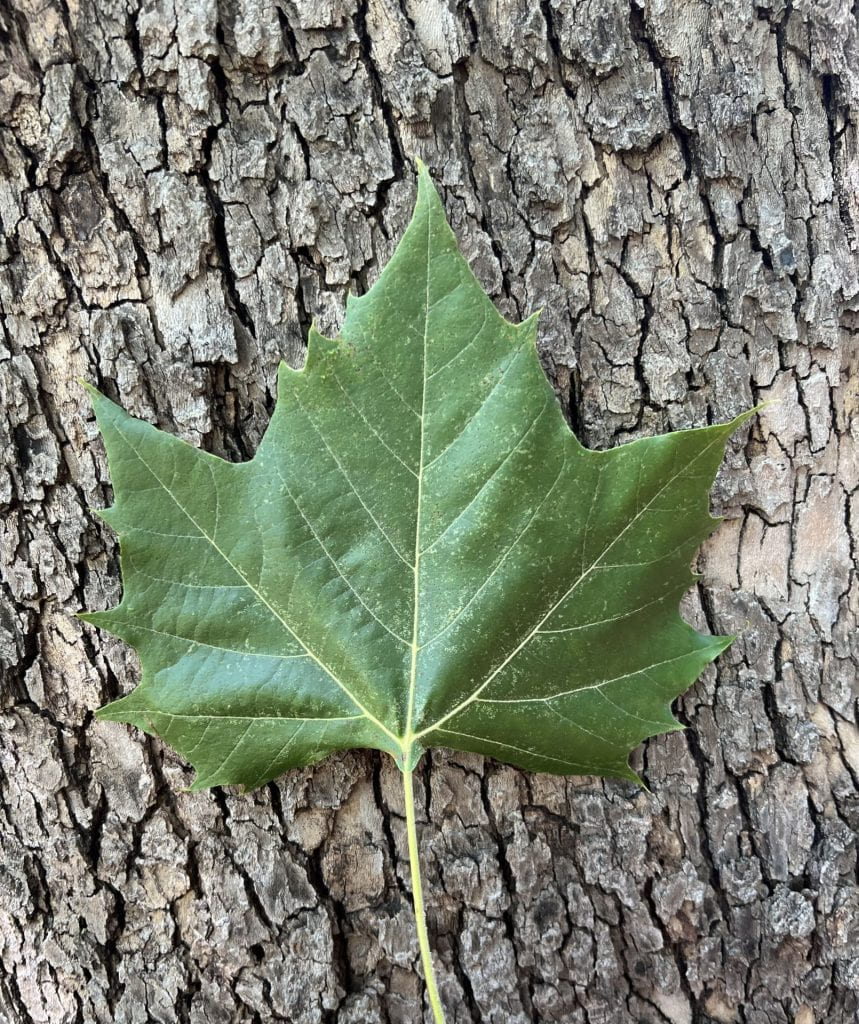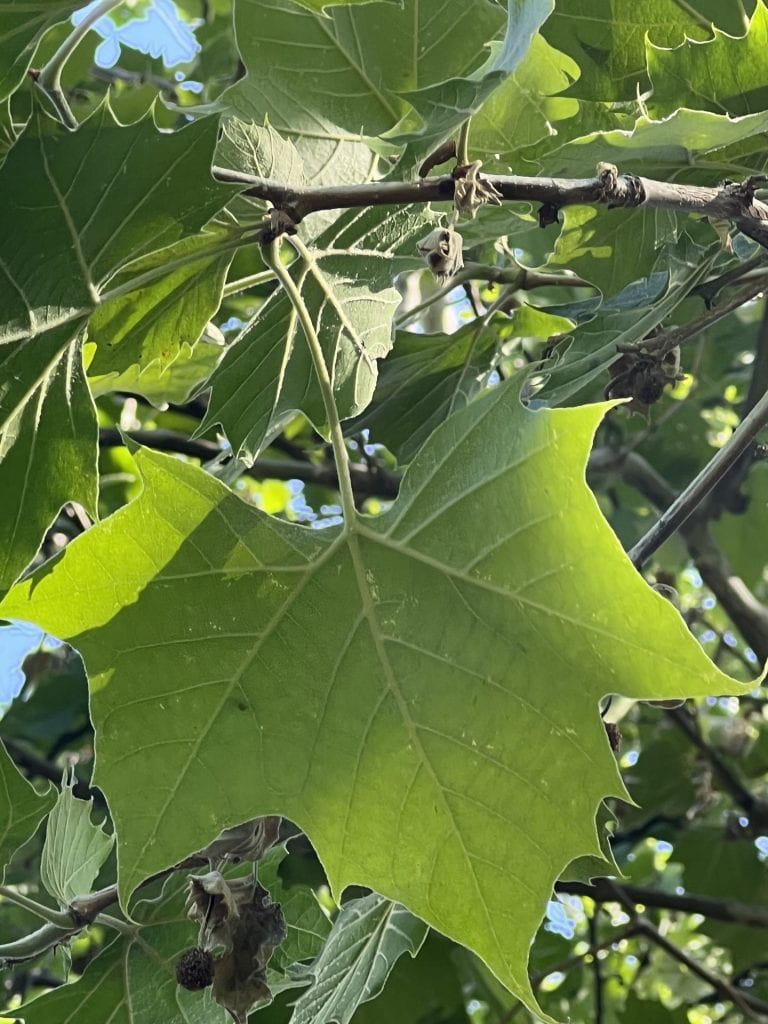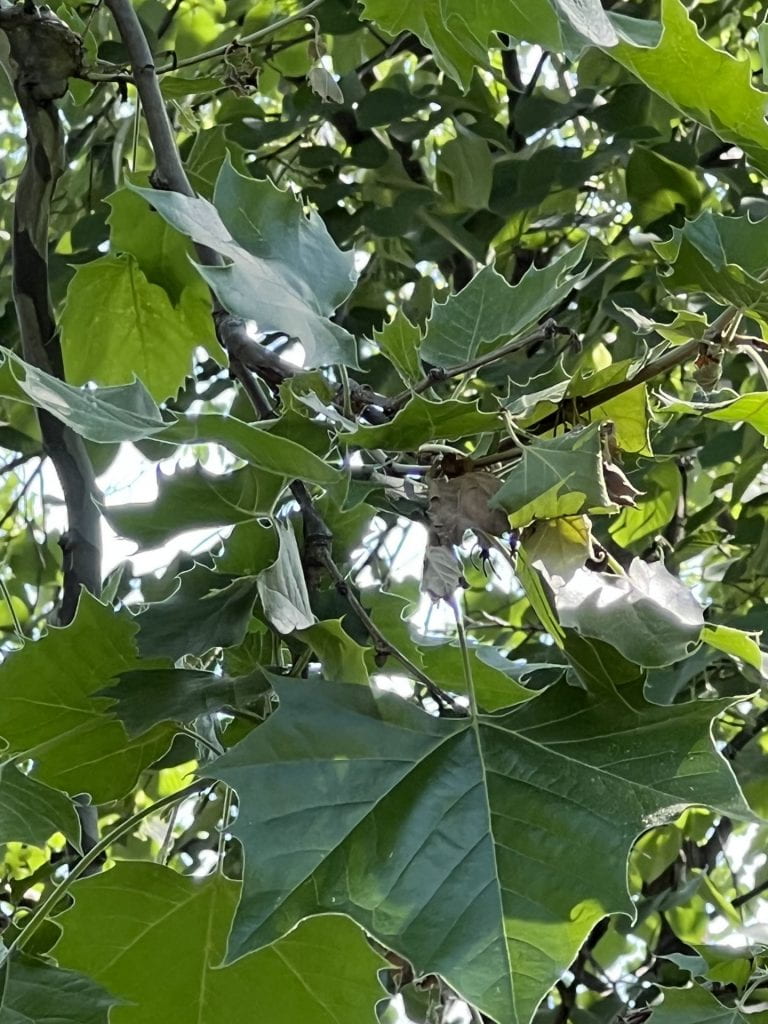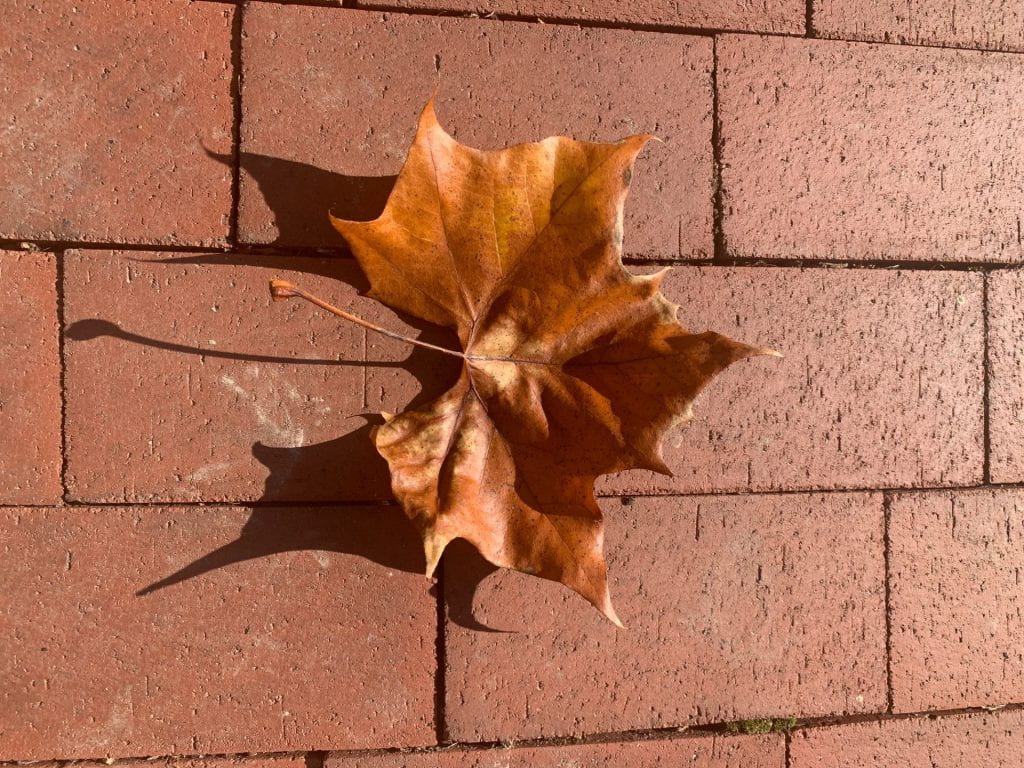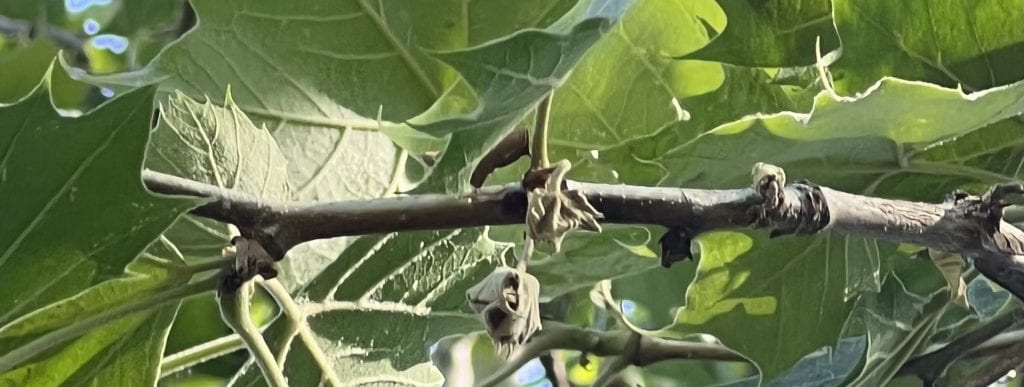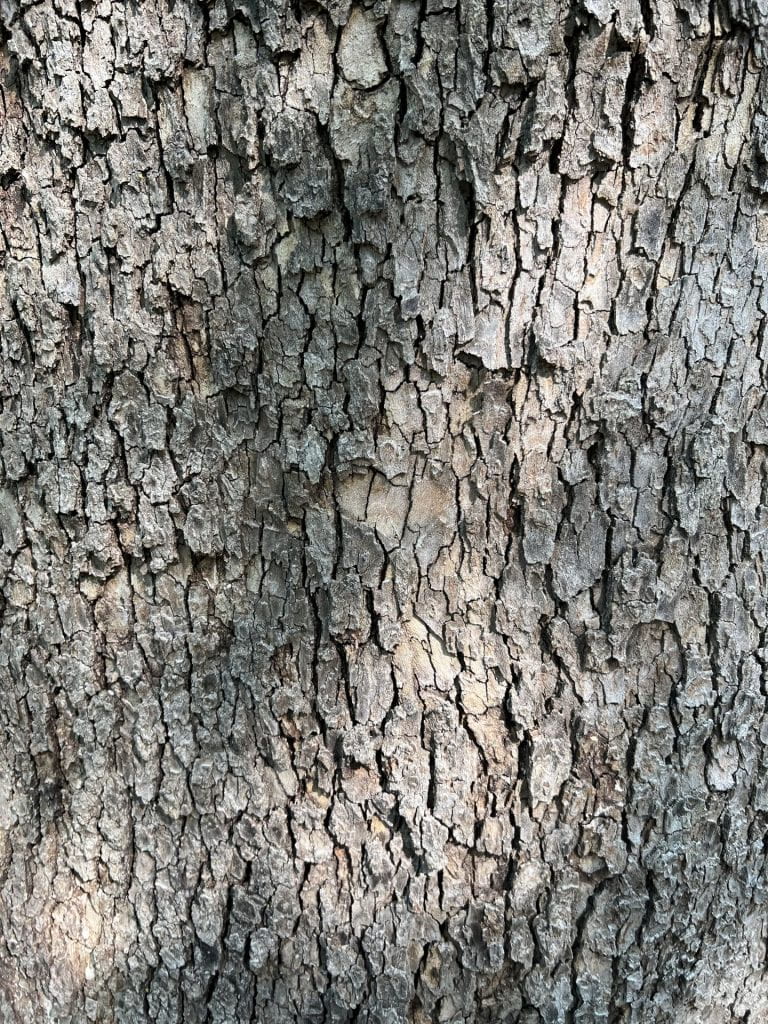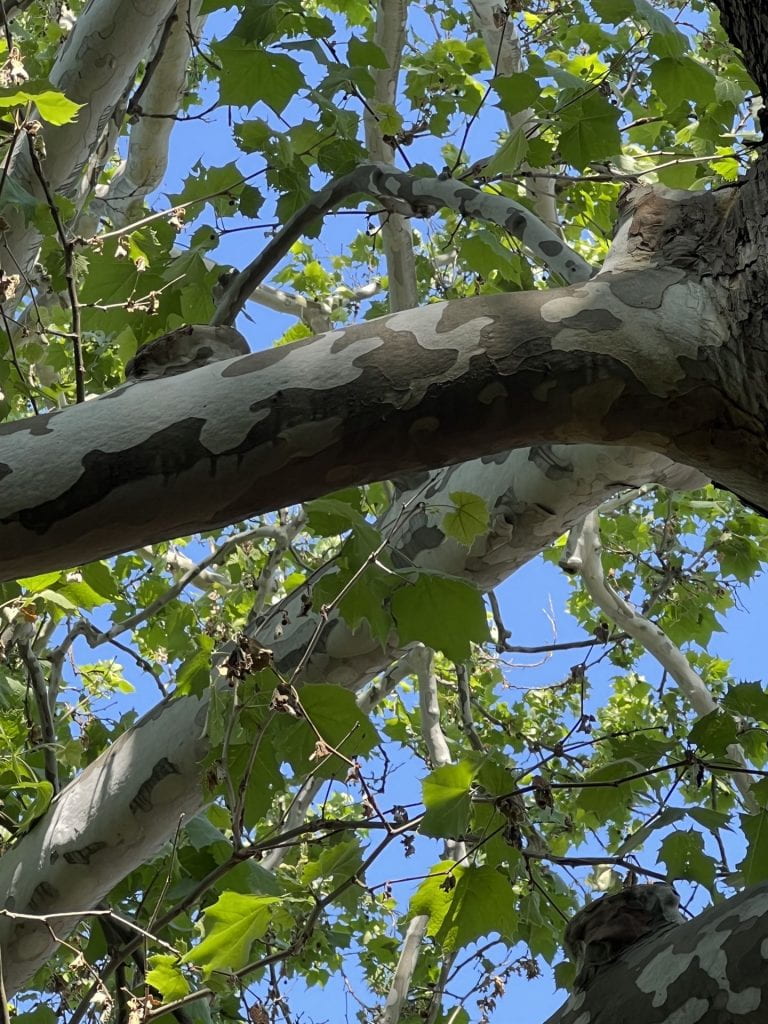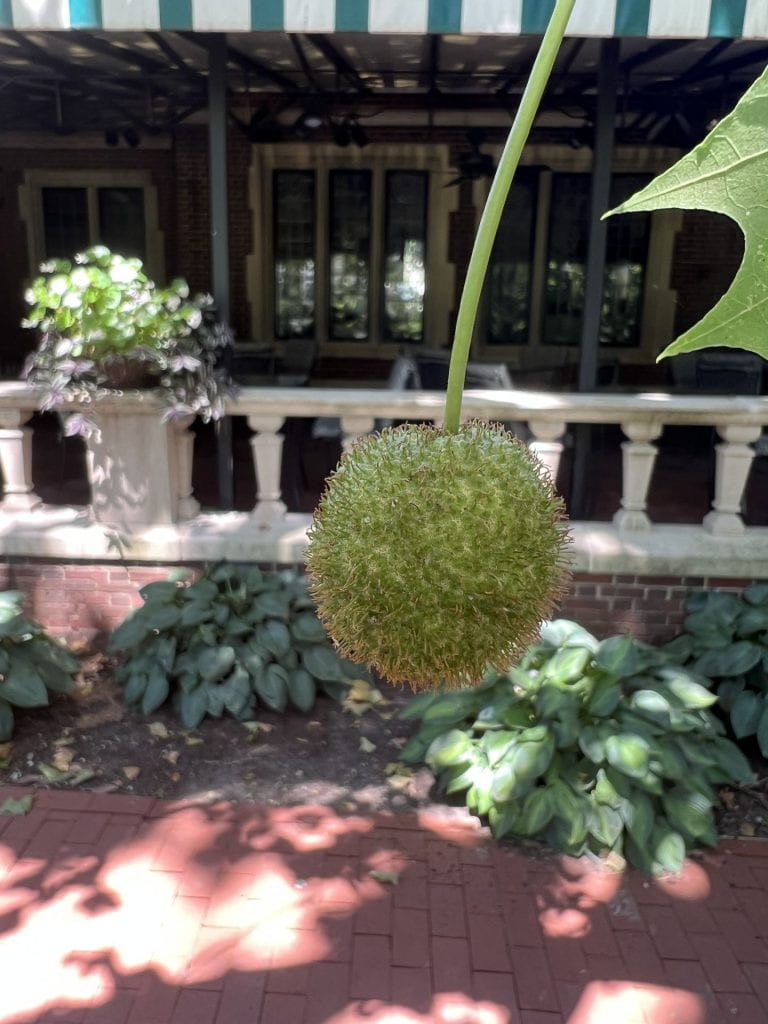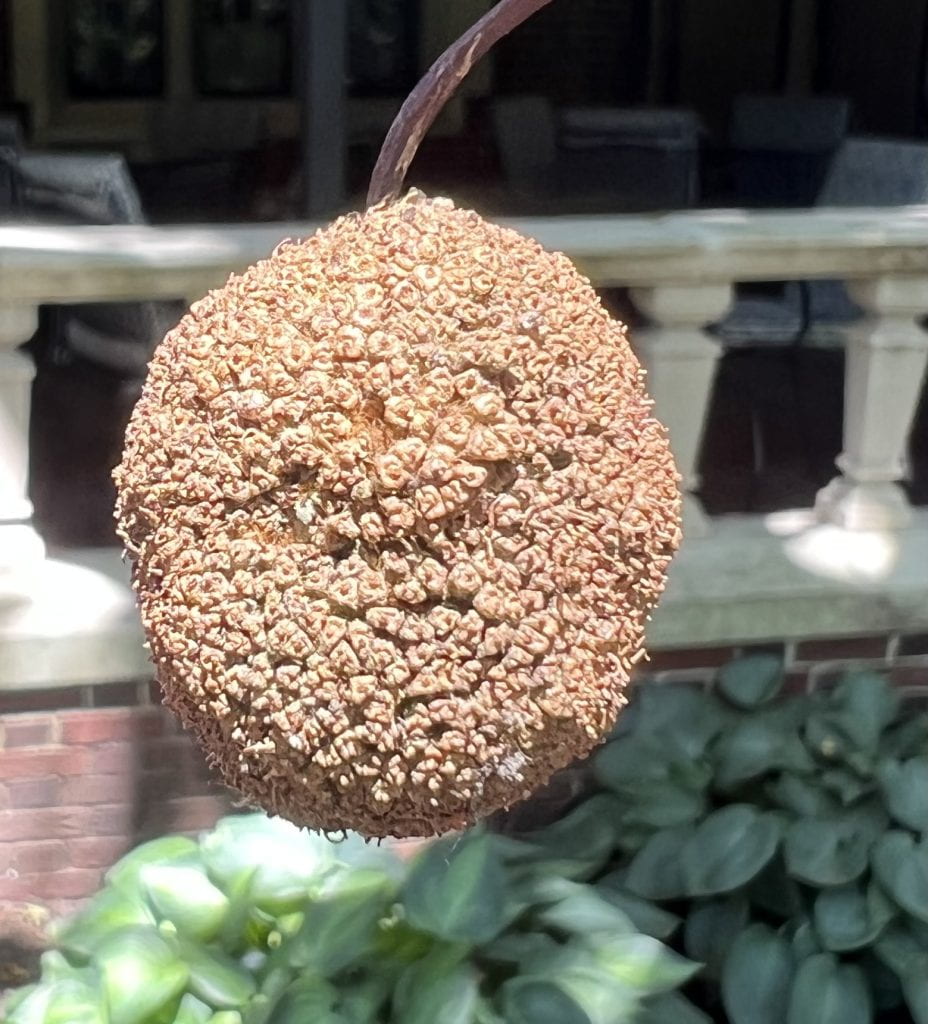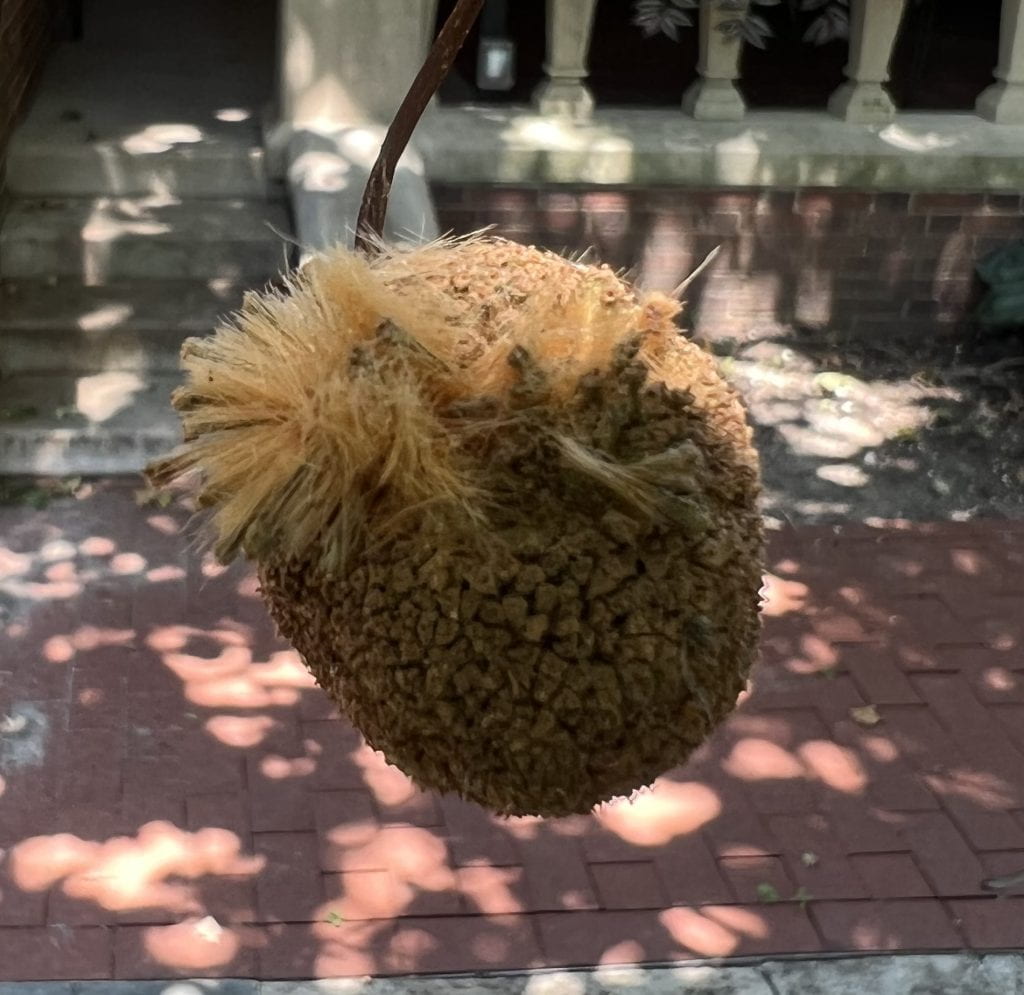Leaf Identification
The leaves of the American Sycamore are 4″ to 10″ wide with coarse toothed margins and palmate lobes. They are typically a medium to dark green color that turn a yellow to brown color in the fall. It has an alternate leaf arrangement (unlike the similar-looking maple).
Twig and Bud Identification
The twig of the American Sycamore is very zig-zag and typically orangish-brown in the winter. They lack terminal buds, and lateral buds are typically reddish with a single bud scale.
Bark Identification
The bark of the American Sycamore has brown bark that exfoliates irregularly, and this reveals a creamy white inner bark. Older Sycamores typically do not exfoliate at the base of the trunk.
Fruit Identification
The American Sycamore produces spherical balls that have about a 1 3/8″ diameter. They ripen to brown in the fall but persists into winter. The ball is actucally made up of several achenes each with a single seed. It is an aggregate fruit, so all of the achenes are derived from one flower.
Flower Identification
The flowers of the American Sycamore are in small rounded clusters. It is monoecious, but the flowers are imperfect. The male flower is yellowish, and the female flower is reddish.
[photo forthcoming]
Planetree ID Tips
- Although it is the only species of Platanus native to Eastern North America, the American Sycamore may be confused in cultivation with the London Planetree, which is a hybrid whose parent is the American Sycamore itself.
- The two trees have similar fruits, but the American Sycamore has solitary fruits, instead of paired fruits on the London Planetree.
- The leaves of the American Sycamore have wider, less divided lobes than the London Planetree or the Oriental Planetree.
